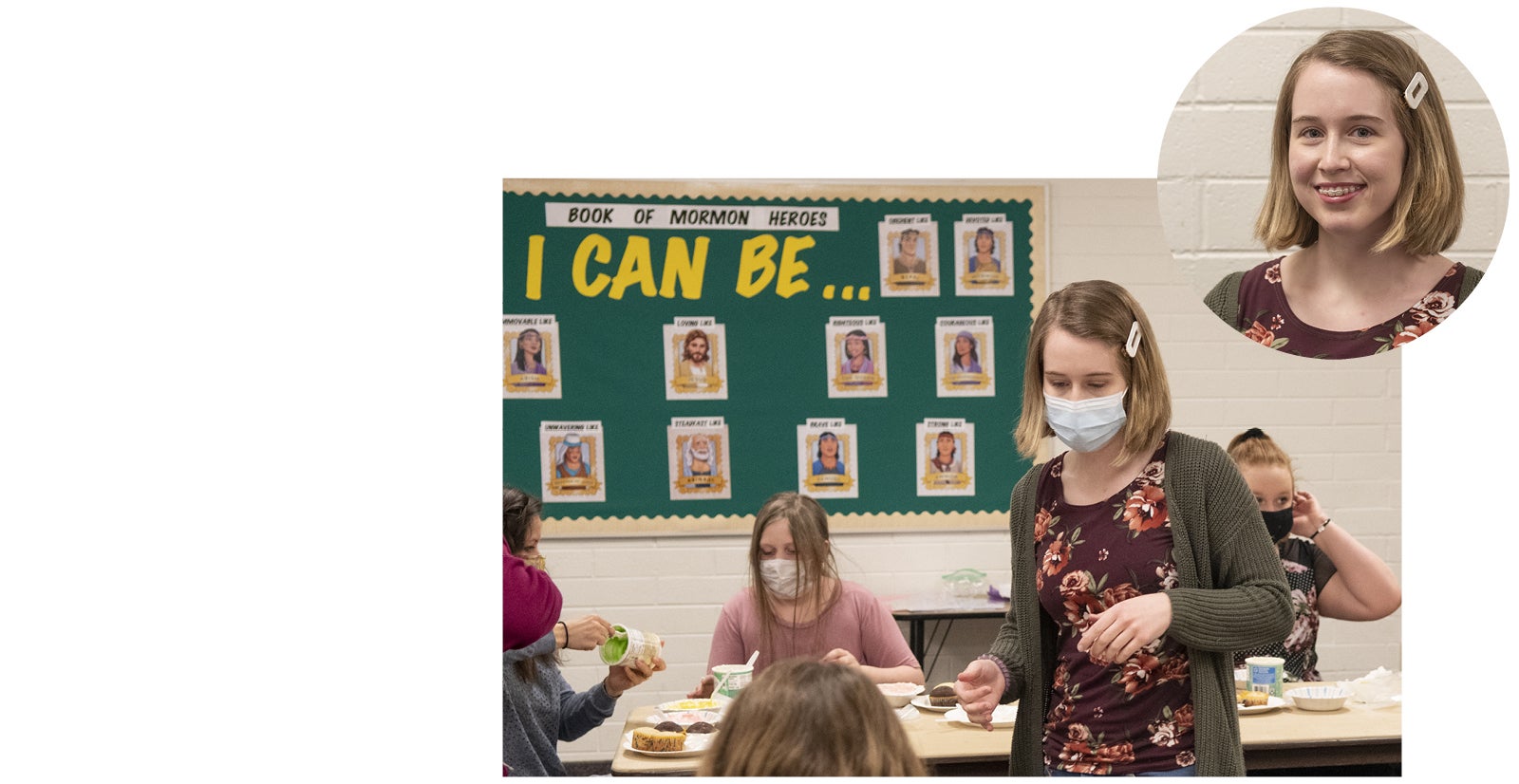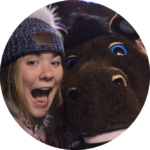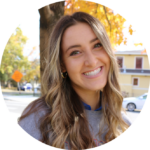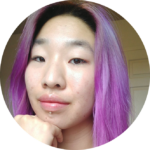
Photos by Madison Park
After a year studying mechanical could include internships, job-shadowing, engineering at Boise State, Autumn Lay left school to serve a mission for the Church of Jesus Christ of Latter-day Saints. She returned from her post in Indiana, continued her studies, but her mission had changed her.
“Mechanical engineering wasn’t where my heart was anymore,” Lay said. She felt called to live a life of service, but wasn’t yet sure what that meant for her. Then the pandemic hit and with it, a shift to online learning. Lay struggled. For the first time in her life, she failed classes.
She realized she needed a break. Boise State’s Bronco Gap Year program, launched in the fall of 2020, was ready to meet her where she was.
The program’s goal is helping students, including those who aren’t sure they’re ready for college, those who are uneasy about returning to campus during a pandemic, or those, like Lay, who need time to find a new direction without losing their ties to the university.
“Each of our gap year students comes to the program with a different story,” said Kelly Myers, interim associate dean in the College of Arts and Sciences. “Bronco Gap Year offers these students a totally different kind of academic space.”
Bronco Gap Year Snapshot
Average student age: 20 (age range: 18-29)
3 out of 4 Bronco Gap Year students already have some college credits
A majority of BGY students are Idaho residents, but the program has attracted students from Washington, Montana, California, Alaska, Florida and Norway
To be seen and heard
Upon enrolling in Bronco Gap Year – formal enrollment in the university is not required – the program matches each student with a support team including dedicated faculty and peer mentors. Students choose an emphasis area: education, public service, social entrepreneurship, major and career exploration, or undergraduate research. They work with their advisors to make an individualized study plan.
Students can earn up to nine elective credits through the university’s Credit for Prior Learning system at the end of their gap year. They take courses through Coursera, the online learning program, and create portfolios to document the work they’ve done. That work could include internships, job-shadowing, teaching, entrepreneurial opportunities or creative pursuits. Among the program’s current group of 35 students, projects include building a website, researching electric cars, and getting certified as a nanny. In the creative arts, one student is creating a musical album with original cover art and compositions while another is developing a structured writing process and learning freelancing skills from a professional writer.
The program also helps students juggle conflicts with work and the gap year program. For one student, a manager at her workplace, the program is helping her build a portfolio around the leadership skills she’s learning on the job.
Lay’s gap year work includes workshops, and intensive writing and reflection. She’s creating a journal to document her gap year experiences and taking courses, including a Coursera class on the coding language Python. Gap year has allowed her to work long days (7 a.m.-5 p.m.) in the fulfillment department at a local company. She leads a youth group at church and pursues her interest in astronomy – she can identify 25 constellations in the night sky. When she returns to Boise State as a full-time student, she’ll return with more self-knowledge and focus, she said. She’s considering a major in education with a minor in engineering, computer science or another STEM field.
“I feel seen and heard through my gap year journey,” Lay said. “That’s been a huge thing for me, to feel validated.”
Katryna Brus
Katryna Brus struggled with debilitating health problems before beginning Bronco Gap Year.
“A big part of this experience has been easing myself back into normal life,” said Brus, who was born and raised in Idaho. She is an artist and musician and has a job caring for kids with special needs. Through the program, Brus is honing her study skills and has found a new interest in psychology. Bronco Gap Year mentors have “kept me on track,” she said, “and given me an idea of what the future can look like.”
Supporting students along the way
“Creating something that’s individualized for each student, yet structured, is a challenge,” Myers said. “But it’s exactly the kind of challenge Boise State is built for.”
The program has buy-in from departments across campus and mentors representing a wide range of disciplines, from health sciences to creative writing, to business.
Megan Gambs, a project manager at Boise State’s Institute for Inclusive and Transformative Scholarship, mentored a gap year student who is now enrolled full time at Boise State. Gambs is in touch with that student weekly, though their formal gap year relationship has ended.
“There’s an expectation that Bronco Gap Year isn’t just a one- or two-semester program, but that it will continue to support students all along the way,” Gambs said.
Mentorships, she said, are one of the most valuable features of Bronco Gap Year.
“Yes, students can earn credits through the program, but how often do they have the opportunity to have a university mentor who is not evaluating them, but is just there as a support?”
Being a Bronco Gap Year mentor, Gambs said, has shifted how she interacts with all students, and has made her think more broadly about the challenges students face in their lives beyond academia.
“Bronco Gap Year is a reminder that students should be at the center of all of the work we do at Boise State,” Gambs said.
Cody McGill
After graduating with his associate’s degree from the College of Western Idaho, Cody McGee wanted to take a semester off, but “not completely off.” Bronco Gap Year was a solution for McGee, who grew up in Nampa and works full time as a supervisor at an area department store.
He dreams of being a human resources director. Through Bronco Gap Year, he has met with Boise State human resource staffers and will complete an internship. He is taking Coursera classes on organizational leadership and human resources management. He plans to enroll at Boise State at the completion of Bronco Gap Year. The program, he said, is helping him make connections with people across campus, and “is helping me understand what I want, making sure I’m on the right path.”
Boise state as a model
In offering a gap year, Boise State is in good company. Princeton University offers a “bridge year” for students to study internationally. Students in American University’s gap year program work as interns in Washington, D.C. Duke University, Florida State University and others offer gap year opportunities. But the Boise State program is unique in the group of students it serves – those needing something different from the usual college experience.
As a new program, Bronco Gap Year has come with surprises. Organizers had anticipated that it would mainly attract new high school graduates. Instead, most gap year participants are Boise State students taking a break from the traditional path.
“I thought Bronco Gap Year would be a recruitment tool. It’s become more of a retention tool,” Myers said.
Bronco Gap Year students pay $750 for one semester, or $1,250 for a full year (nine credits in a year would cost $3,294 under traditional enrollment). Still, some students are unable to pay, even with scholarships available to in-state students. The program is looking for creative solutions to be as inclusive as possible and help the university, Myers said, “catch students we would otherwise lose.”
Other universities are noticing. Louisiana Tech University is launching a gap year program this summer based on Boise State’s model.
“We could have Bronco Gap Years popping up all over the country,” Myers said.
Peer Power
One of the most unique features of Bronco Gap Year is its inclusion of peer mentors, current students who meet with gap year students to share their own experiences and challenges. The peer mentors have been invaluable, Kelly Myers said, helping gap year students feel connected to campus.

Abigail Tucker, Peer mentor, nursing student
“Coming from a military family, I’ve moved around a lot. Because of that, because of always being the new person, I have a passion for helping people feel like they’re part of something. Contemplating college might come with a lot of fear for some students. They might be unsure if college is even the right choice for them. But there are programs like Bronco Gap Year to guide them and a team of people who care.”

Kate Weis, Peer mentor, sociology/gender studies student
“Bronco Gap Year is an awesome program for a niche student that universities haven’t historically supported. It shows them grace and allows them to be vulnerable. The student I work with has challenges, including being a single parent to three kids. She has always dreamed of going to college and would be the first generation in her family to do so. Working with her has been a reminder that we are all doing the best we can.”

Paige Harwood, Peer mentor, film student pursuing a public relations certificate in entrepreneurship
“My first semester at Boise State was rough. I didn’t know what I was doing, and felt like I wasn’t where I was supposed to be. But I got a job with Multicultural Student Services. They became a huge support system for me and they were part of why I’m still here. Because aside from the equity work, I made great friends. Now, working as a mentor for gap year, I feel like I can empathize with students who are struggling. It’s not something to be ashamed of.”